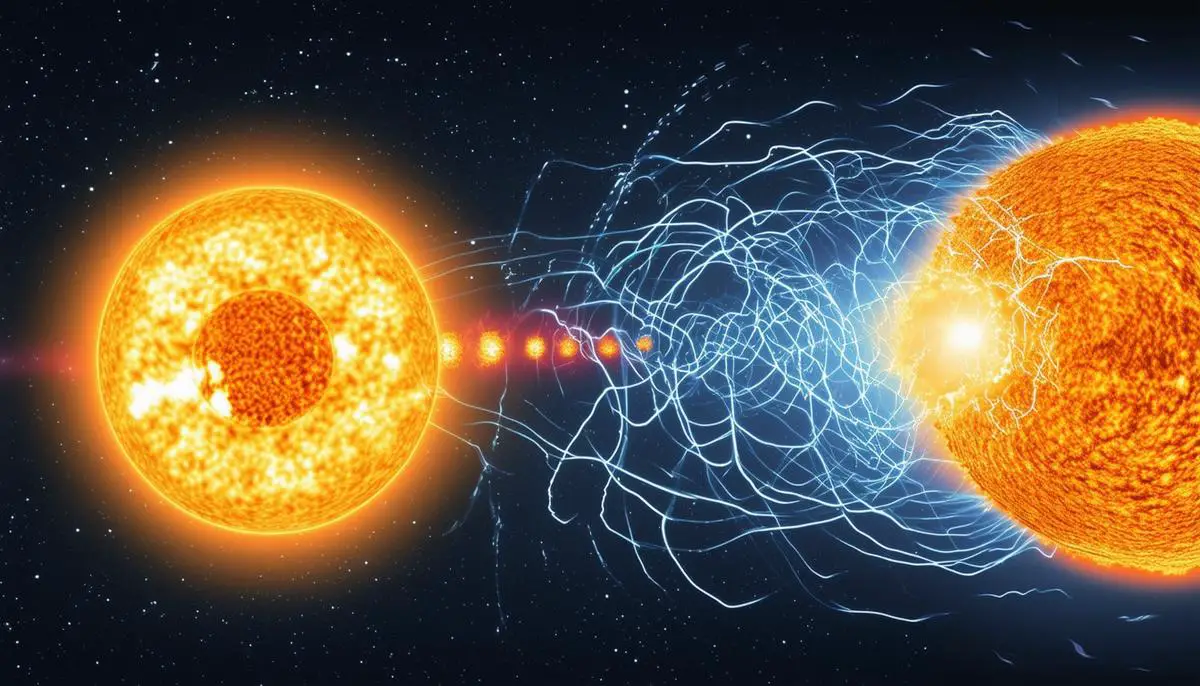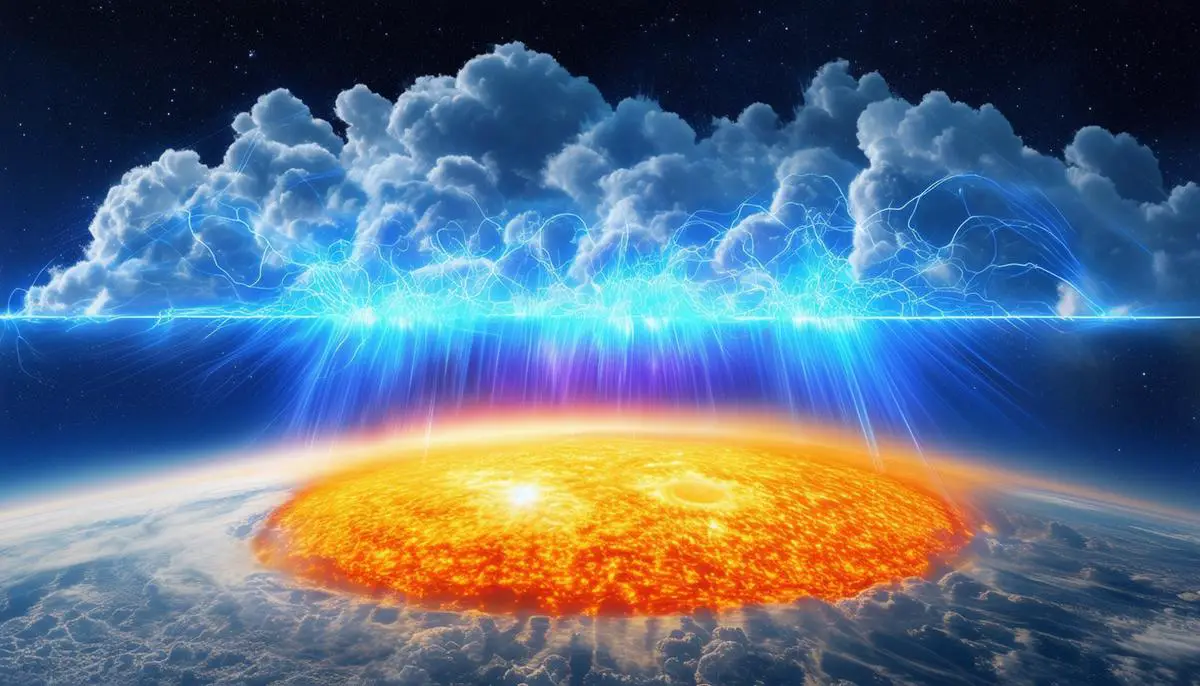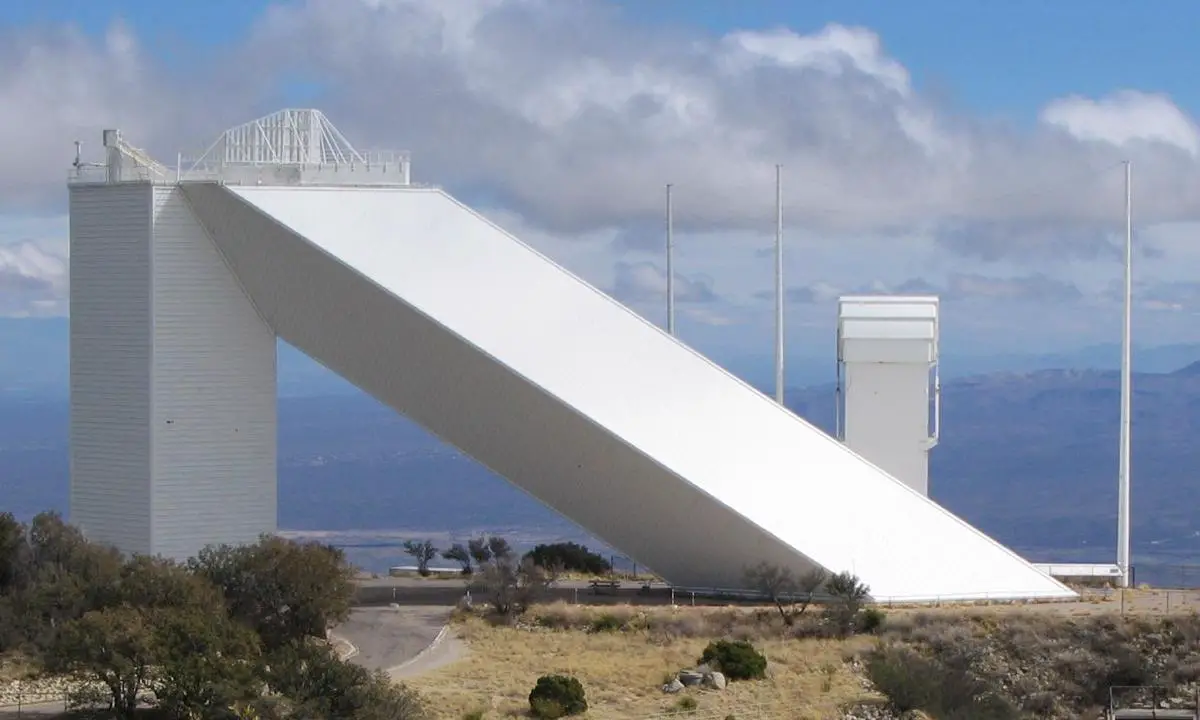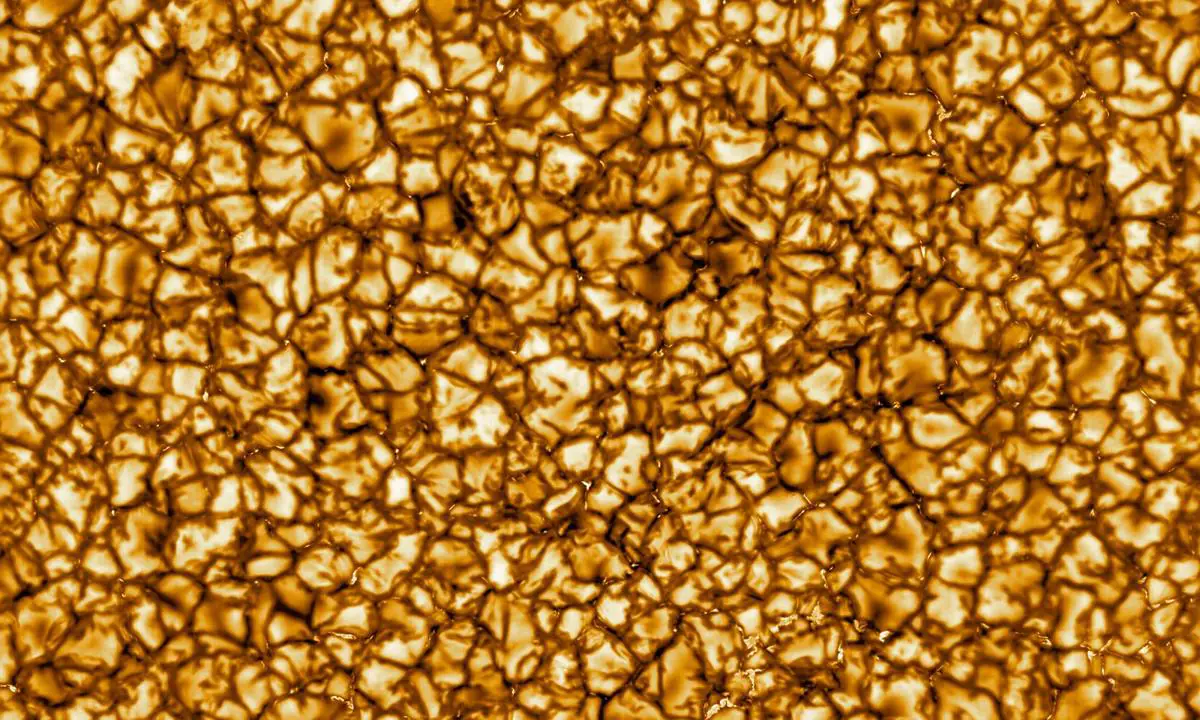Understanding the Sun's Magnetic Field Reversal
The Sun's magnetic field reversal is a gradual process driven by the solar dynamo mechanism. In the Sun's core, the dynamo churns plasma, generating magnetic fields. These fields start simply, like a bar magnet with clear poles. But the Sun's differential rotation, faster at the equator and slower at the poles, twists the magnetic lines of force, causing them to emerge as sunspots.
Sunspots, the epicenters of intense magnetic activity, play a pivotal role in the gradual reversal. They follow a predictable pattern described by Hale's law, with their magnetic orientation flipping with each cycle. Sunspots near the equator align with the old magnetic field, while those closer to the poles match the incoming field. These new sunspots gradually migrate towards the poles, weakening the existing magnetic field until it flips entirely.
This reversal happens every 11 years, marking the solar maximum mid-point. During reversal, the current sheet – an electrical surface extending from the Sun's equator – morphs into a wavier structure, enhancing our interaction with solar storms. These storms, originating from coronal mass ejections (CMEs) and solar flares linked to sunspot activity, cause geomagnetic storms on Earth.
Tracking these flips teaches scientists about solar behavior, aiding predictions of future space weather. If the transition is swift, it signals a vigorous upcoming solar cycle, hinting at more sunspots and heightened solar activity. Conversely, a sluggish flip suggests a quieter period ahead.

Impact on Space Weather
The Sun's magnetic field reversal heralds changes in space weather, impacting phenomena beyond our planet. One critical element influenced is the solar wind, whose behavior becomes more erratic, leading to greater interactions with Earth's magnetosphere and potential impacts on satellite operations, communication systems, and power grids.
Closely linked is the interplanetary magnetic field (IMF), an extension of the Sun's magnetic field carried by the solar wind. As the Sun's magnetic field flips, shifts in the IMF create wavy patterns and polarity changes, modifying the structure and intensity of geomagnetic storms.
The heliospheric current sheet, a vast surface extending from the Sun's equator, becomes increasingly wavy during a reversal period, acting as a robust barrier against high-energy cosmic rays from interstellar space, shielding our solar system more effectively.
However, the disorganized magnetic field can lead to heightened solar activity, increasing the frequency and intensity of solar storms like CMEs and solar flares, which can trigger geomagnetic storms and disrupt:
- Satellite operations
- Communication and navigation systems
- Power grids
The temporary weakening of the Sun's magnetic shield also allows a higher cosmic ray flux, potentially influencing Earth's climate and posing risks for astronauts.
One visually stunning consequence is the potential for enhanced auroras caused by charged particles colliding with Earth's atmosphere, as geomagnetic activity spikes. These dazzling displays of light become more frequent and intense, especially in regions closer to the poles.

Effects on Earth's Weather and Climate
While the Sun's magnetic field reversal primarily impacts space weather, it carries the potential to subtly influence Earth's weather patterns and climate. One theory involves the link between cosmic rays and cloud formation. During the magnetic flip, the weakened solar magnetic field allows more cosmic rays to penetrate the heliosphere, potentially increasing cloud cover and affecting the albedo (the amount of sunlight reflected back into space), leading to cooler surface temperatures.
Lightning and storm intensity could also be affected by variations in cosmic ray flux, with some studies suggesting that increased ionization from cosmic rays could influence lightning generation and storm intensity. However, the relationship between cosmic rays, cloud formation, and lightning generation is complex and not fully understood.
There is also a debate about the potential impact of the magnetic reversal on storm frequency and intensity, with the theory that increased cosmic ray flux could enhance cloud formation and the hydrological cycle, potentially leading to less frequent but more intense storms.
Despite these compelling theories, most climatologists agree that while solar activity, including magnetic reversals, can contribute to minor climate fluctuations, they are unlikely to be a dominant driver compared to other factors like greenhouse gas emissions, volcanic activity, and oceanic cycles.
As scientists continue to investigate these potential links, ongoing observations and advanced climate modeling play key roles. Understanding the intricate dance between cosmic rays, cloud formation, and atmospheric dynamics may eventually illuminate how solar activities influence weather patterns. While the Sun's magnetic field reversal could have nuanced effects on Earth's weather and climate, it remains one part of a vast and complex system.

Technological and Astronautical Implications
As the Sun's magnetic field undergoes its reversal, the implications for technological and astronautical endeavors are significant. Satellites, spacecraft, and astronauts operating in space face heightened risks from cosmic rays and solar storms.
- Satellites are vulnerable to signal disruptions, electronic damage, and solar panel degradation.
- Protective measures include:
- Reinforcing satellites against radiation
- Equipping them with systems that can temporarily shut down sensitive circuits
- Adjusting orbits to avoid intense space weather
Spacecraft traveling beyond Earth's protective magnetosphere face greater exposure to hazardous solar and cosmic radiation. Advanced radiation shielding and storm shelters are being developed to protect astronauts and onboard electronics from prolonged exposure to high-energy particles. Mission planners aim to schedule activities during periods of lower solar activity and use storm shelters during solar storm events.
Monitoring and early warning systems play a crucial role. Instruments onboard spacecraft and observatories provide real-time data on solar activity and cosmic ray flux, enabling timely warnings for incoming solar storms. This allows astronauts to take preemptive measures, such as retreating to storm shelters and delaying extravehicular activities.
The International Space Station (ISS), operating within Earth's magnetosphere, has some natural protection. Nonetheless, rigorous protocols are in place, including radiation detectors, shielded capsules, and training for astronauts on how to react during space weather events.
International collaboration is essential, with agencies sharing data, developing predictive models, and establishing cooperative response strategies. Missions like ESA's Solar Orbiter and NASA's Parker Solar Probe enhance our ability to anticipate space weather events, providing critical insights into the Sun's behavior.

Current Research and Future Predictions
Current research efforts leverage observatories and space missions to study the Sun's magnetic field reversal. The Wilcox Solar Observatory at Stanford University has been instrumental in tracking solar magnetic fields and monitoring sunspot activities. NASA's Parker Solar Probe provides unprecedented close-up data on the solar atmosphere and magnetic fields, while SOHO captures images and spectral data of solar flares and coronal mass ejections (CMEs). ESA's Solar Orbiter mission contributes by capturing detailed images of the Sun's polar regions, crucial for understanding the reversal process.
Predictions for upcoming solar cycles are a focal point, with scientists utilizing observation data and modeling techniques to forecast the intensity and implications of future solar activity. Understanding the potential long-term effects of the magnetic reversal on space weather and Earth's climate is an ongoing endeavor. Climate scientists explore the connections between solar magnetic activity and terrestrial weather patterns, incorporating solar data into advanced climate models.
The collaborative efforts of international space agencies, coupled with cutting-edge technology and comprehensive data analysis, are propelling our understanding of the Sun's magnetic field reversal to new heights. These endeavors enhance our ability to predict and adapt to the impacts of solar activity while inspiring our ongoing quest to explore and thrive in the cosmos.

The Sun's magnetic field reversal is a pivotal event with wide-ranging impacts. By continuing to study and monitor these changes, we can better prepare for the challenges and opportunities they present, ensuring our technological systems and scientific endeavors remain resilient in the face of solar activity.
![]()
